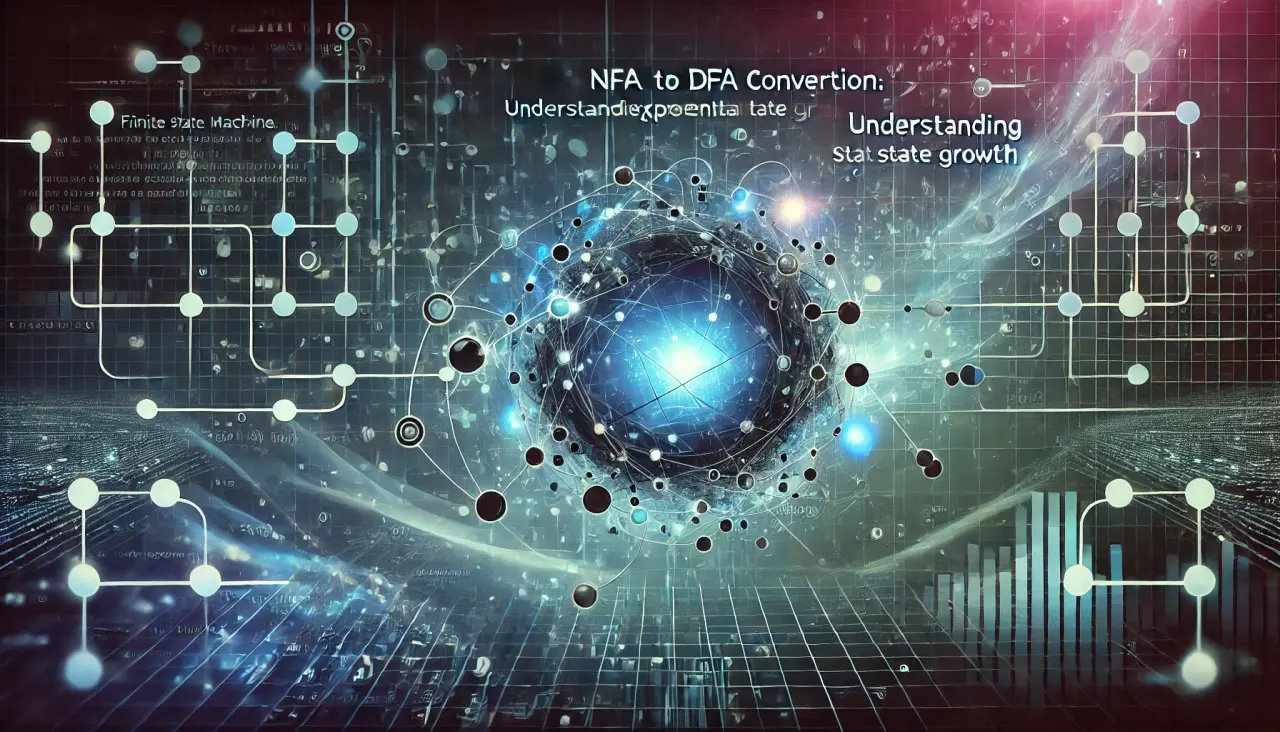How to Create an NFA That Converts to a DFA with 2ⁿ States

How to Create an NFA That Converts to a DFA with 2ⁿ States
In this blog post, we will explore how to create an NFA that converts to a DFA with 2ⁿ states in the worst case. This is a common scenario in automata theory, and understanding it is crucial for anyone working with finite automata. The conversion from NFA to DFA can lead to an exponential increase in the number of states, which is a significant consideration in the design and analysis of automata.
- In the worst-case scenario, an NFA with n states can result in a DFA containing up to 2ⁿ states, demonstrating the exponential growth in state complexity.
Converting an NFA to a DFA with 2^n States
Introduction
In automata theory, converting a Non-deterministic Finite Automaton (NFA) to a Deterministic Finite Automaton (DFA) can lead to an exponential growth in the number of states. In this blog, we will analyze an example where a 3-state NFA transforms into a DFA with up to 8 states.
NFA Diagram
Below is the NFA used for this conversion:

Step 1: Identifying ε-Closures
To begin, we determine the ε-closures of each NFA state:
- ε-closure(
{A, C}) (A reaches C via ε) - ε-closure(
{B}) - ε-closure(
{C})
Step 2: DFA State Construction
Each DFA state represents a subset of the NFA states. Since the NFA has three states ({A, B, C}), the DFA can have up to (2^3 = 8) states.
The DFA states are:
{A, C}(Start state){A}{A, B}{B}{B, C}{C}{A, B, C}- Trap State (T)
Step 3: Transition Table
The transition table for the DFA is constructed as follows:
| States | a | b |
|---|---|---|
{A, C} | {A} | {A, B} |
{A} | Trap | {B} |
{A, B} | {B, C} | {B, C} |
{B} | {B, C} | {C} |
{B, C} | {A, B, C} | {A, C} |
{C} | {A} | {A} |
{A, B, C} | {A, B, C} | {A, B, C} |
Step 4: Final DFA Diagram
Below is the DFA representation after conversion:

Conclusion
This example demonstrates how an NFA with n states can lead to a DFA with 2^n states in the worst case. This exponential blow-up is one of the key challenges in NFA-to-DFA conversion and is why NFAs are often preferred for practical applications like regex matching.
🚀 Stay tuned for more deep dives into automata theory!